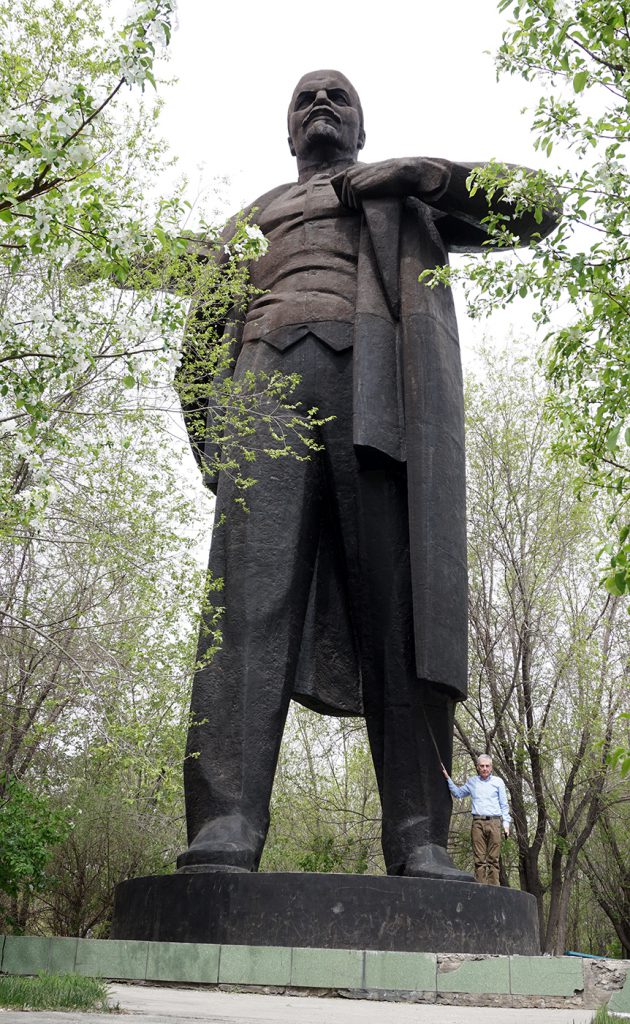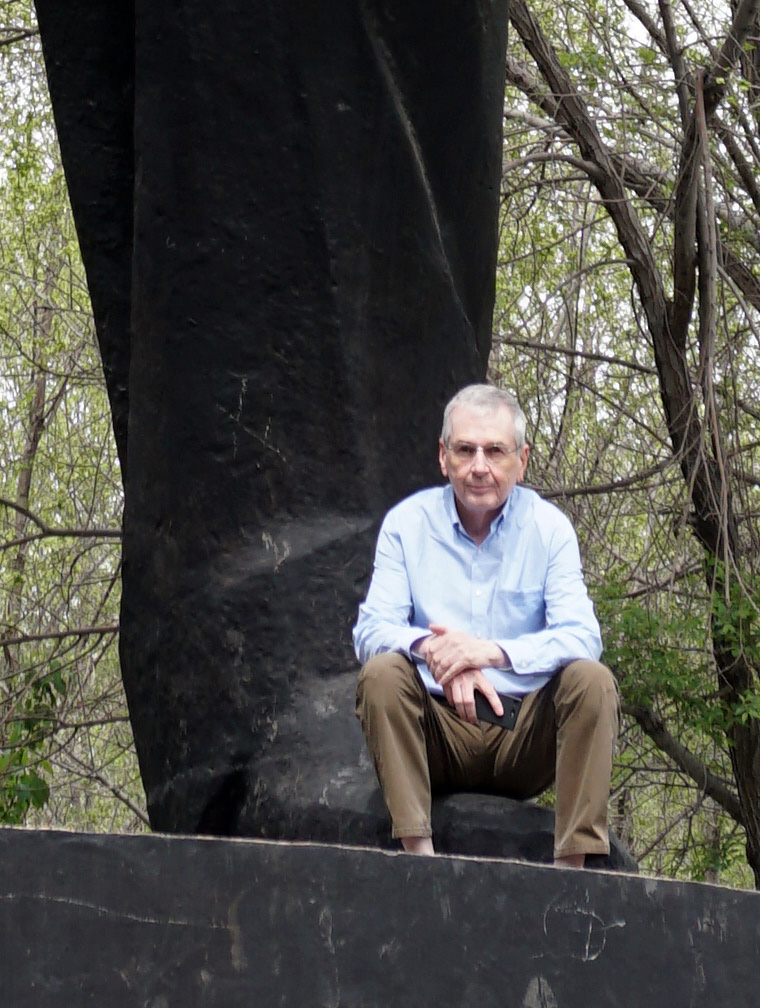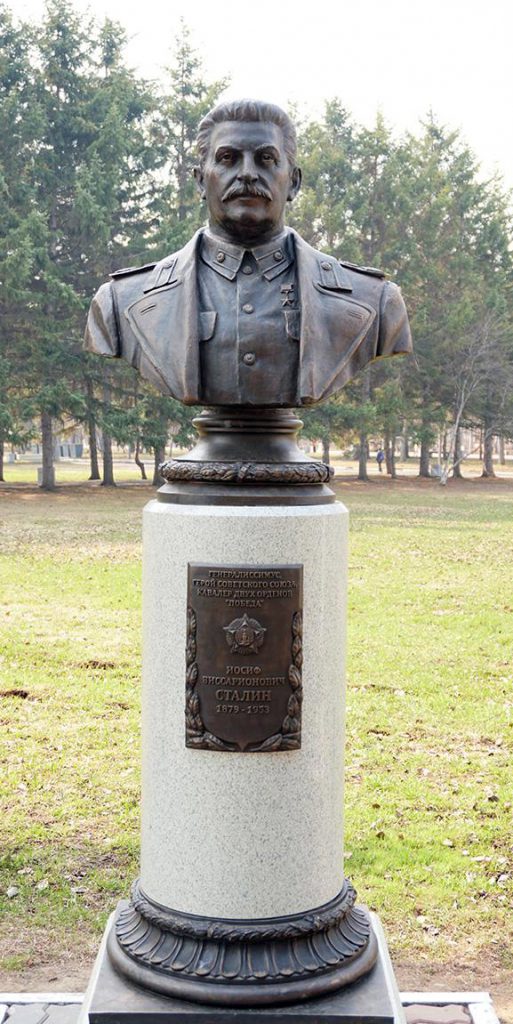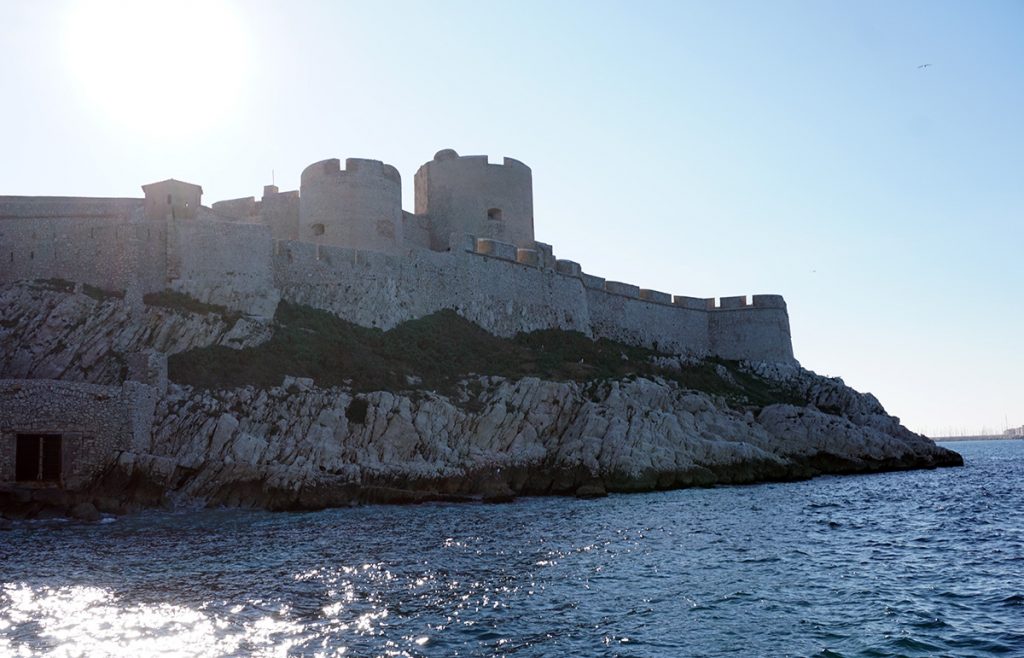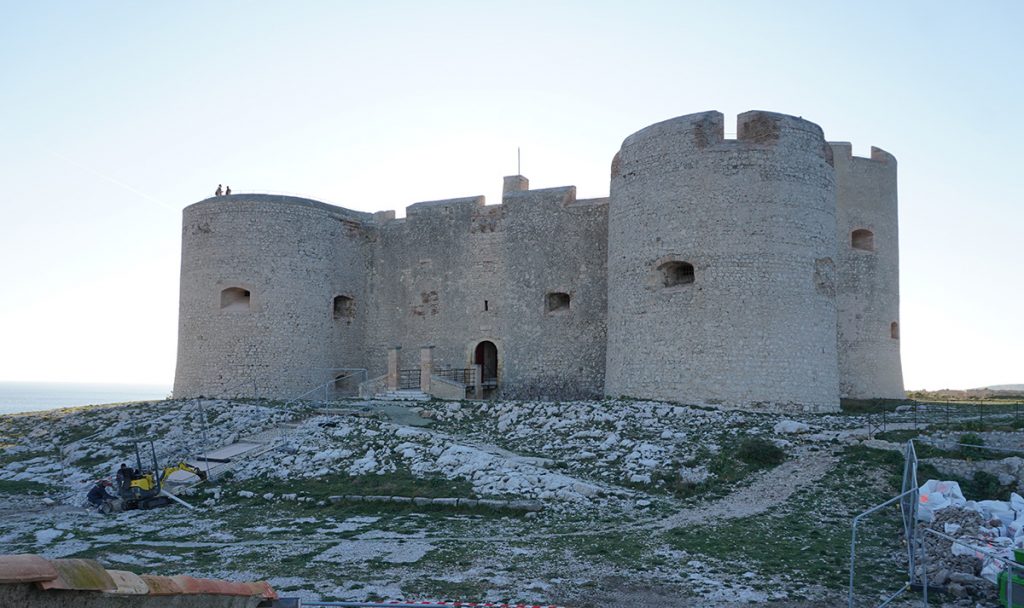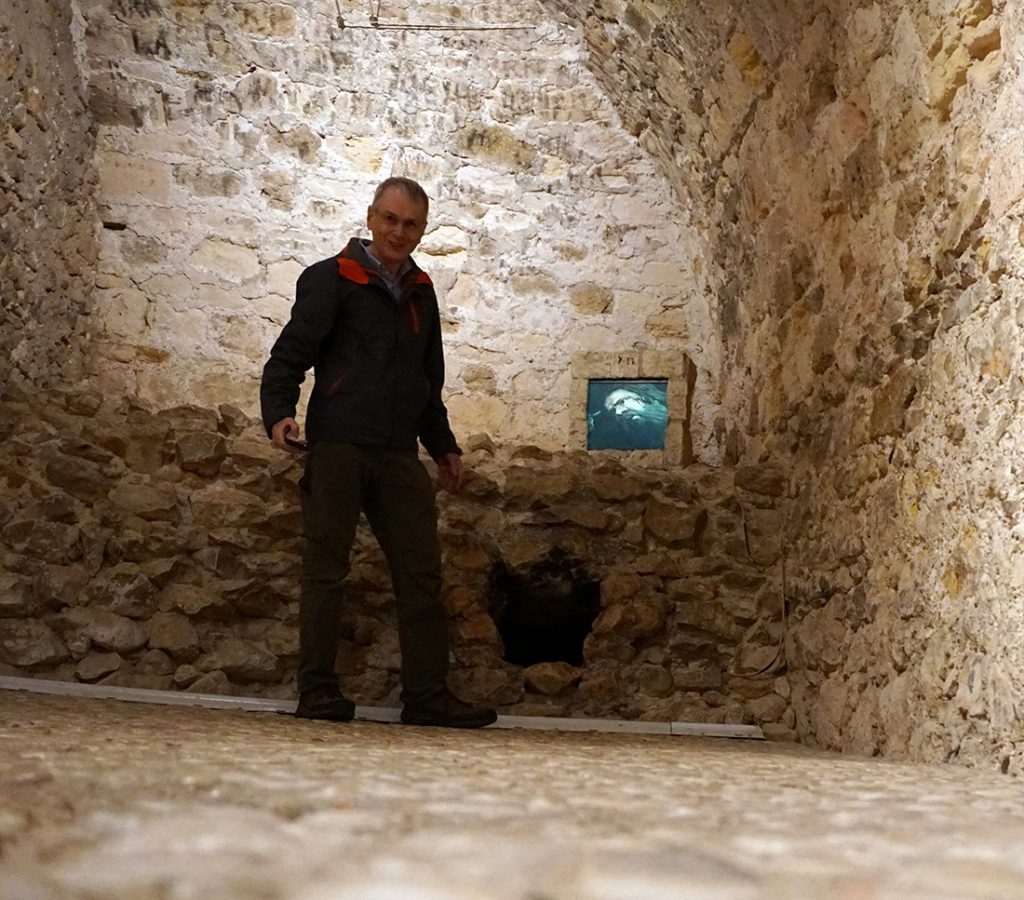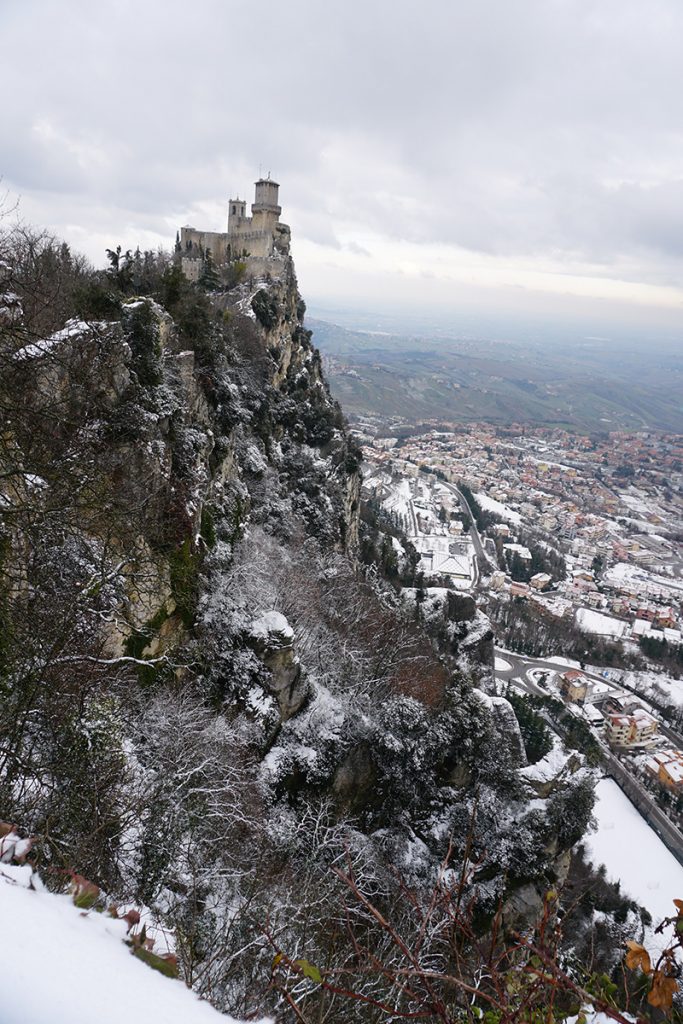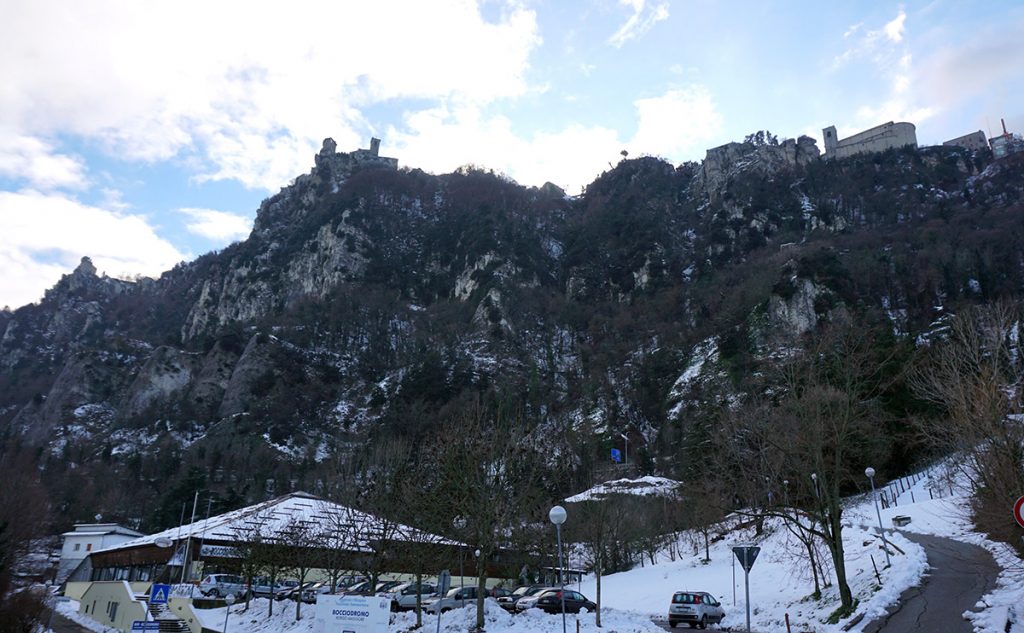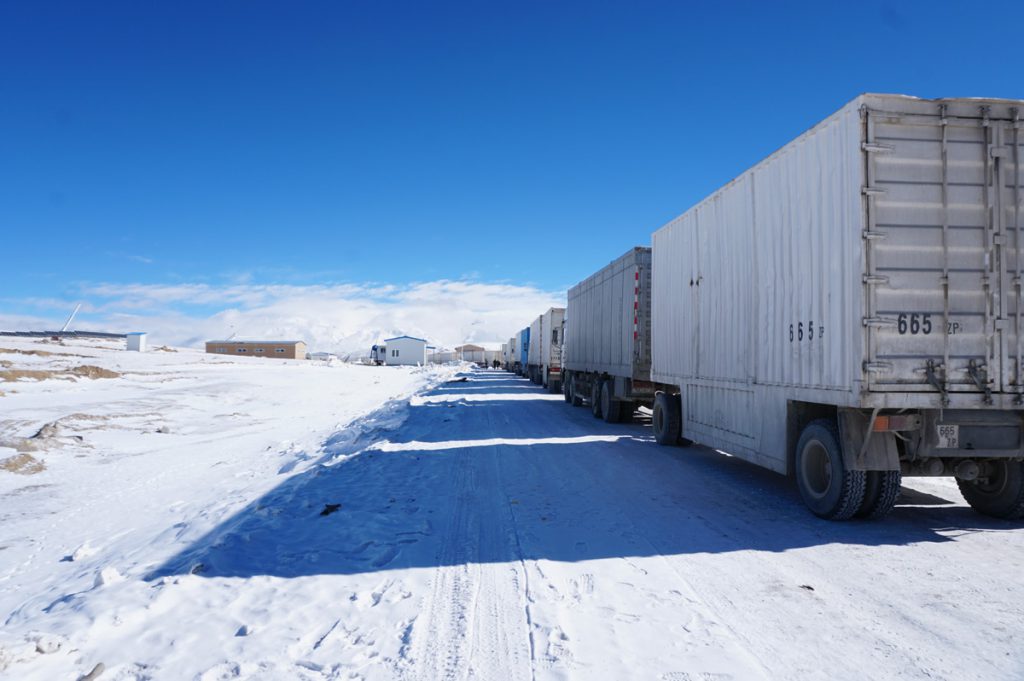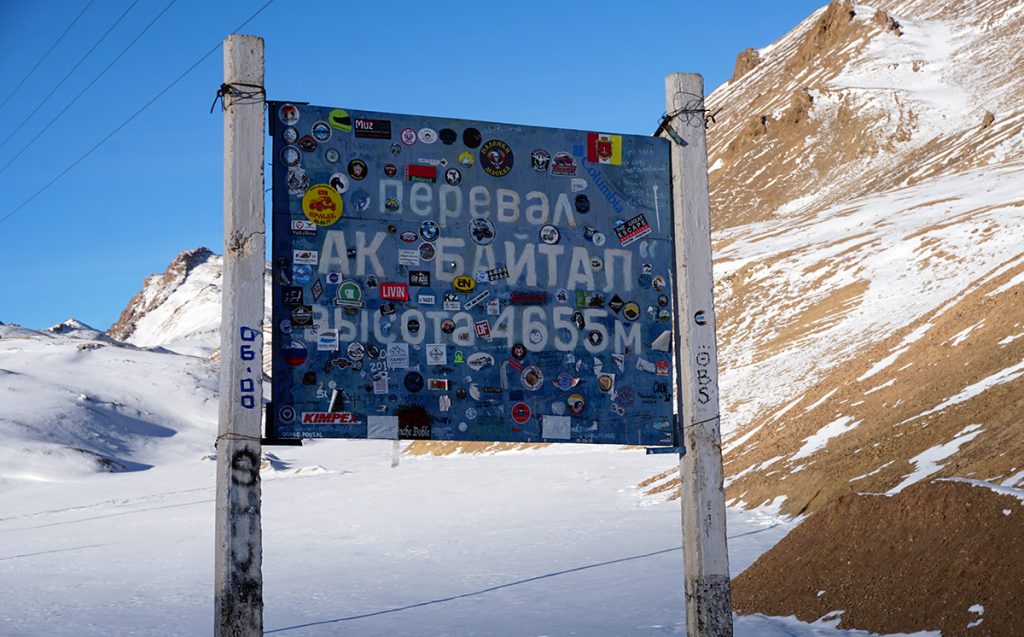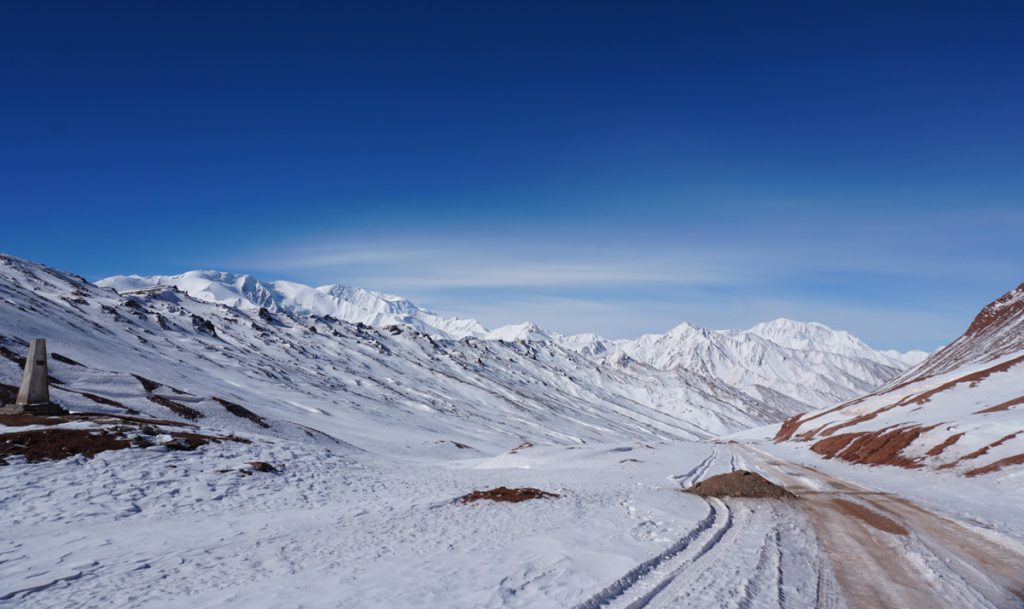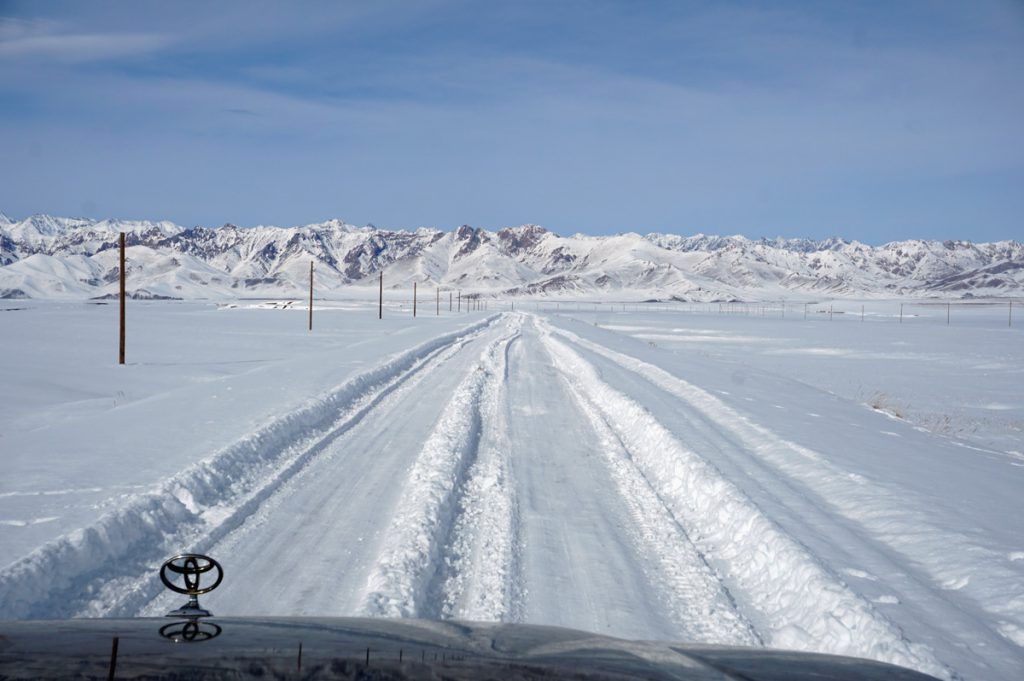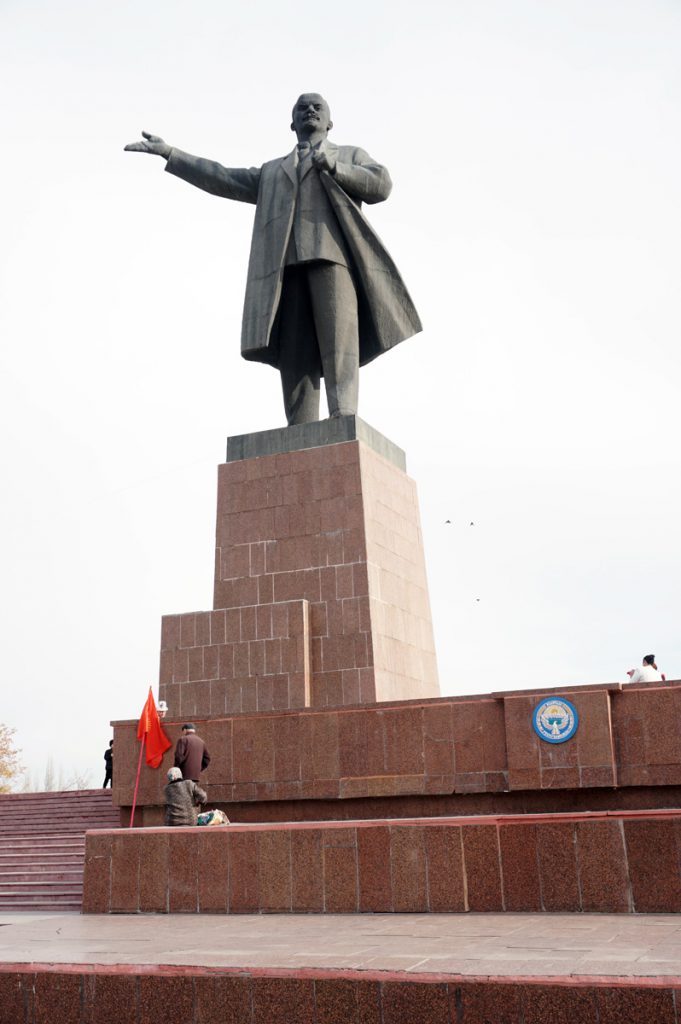I’ve been visiting the old Soviet nuclear weapons test site at Semipalatinsk, aka “the Polygon”. The site isn’t nearly as bad as its rather dire historic reputation – the last 25 years have seen a lot of clean up and containment. The worst areas have either been scraped off and buried, or are fenced off.
To my surprise, driving around the test area, there was mostly only normal low background levels of about 0.1 microSieverts/hour. But we did visit a couple of highlights:
The Epicenter for the First Soviet Nuclear Test
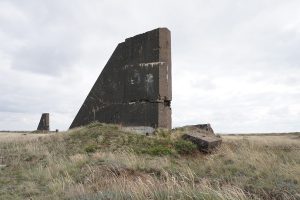 |
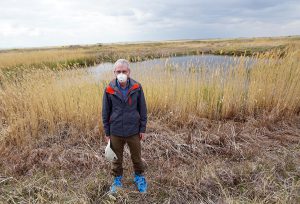 |
Ground zero for the first Soviet A-Bomb test is marked by a small pond. It is surrounded by an array of weird concrete observation towers, increasingly ruined nearer the center. It looks like what it was, the center of an enormous occult engineering effort that “succeeded”.
At the epicenter the levels are up to 30 uSv/hr or even 60 uSv/hr at points on the ground. Nothing to worry about for a short visit, but you wouldn’t want to live there.
Atomic Lake
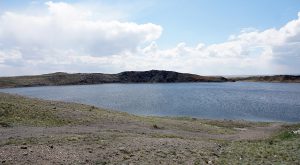 |
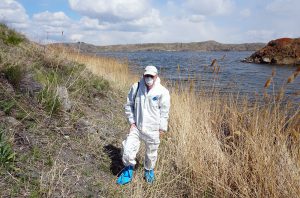 |
The Soviets were interested in using nuclear bombs for civil engineering, so they tested a 140 kiloton bomb to create an artificial lake. Well they got themselves a nice 400 meter diameter lake, but they also got residual radioactivity around the rim and in the sediment at the bottom of the lake. My guides assured me that “the water is safe”. There are fish, and they have been tested and declared safe. (“Except for the bones and nobody eats the bones.”) Local fisherman are known to visit.
Radiation even on the crater rim was only up to about 1-2 uSv/hr.
Overall Safety
At both the epicenter and Atomic Lake, the guides were mainly concerned that we might inadvertently pick up small fragments of higher radioactive material and carry them out with us. Hence the need for face masks, shoe covers, etc. And we all got carefully scanned on our way out.
The local Kazakh farmers are allowed to graze their cattle around most of the test site area, but they are required to have the meat tested when the cattle are slaughtered. This sounds a little scary, but is probably a smart pragmatic compromise: the farmers were sneaking in anyway and this way they don’t try to hide anything and the meat gets properly checked.
It was an interesting short trip!
